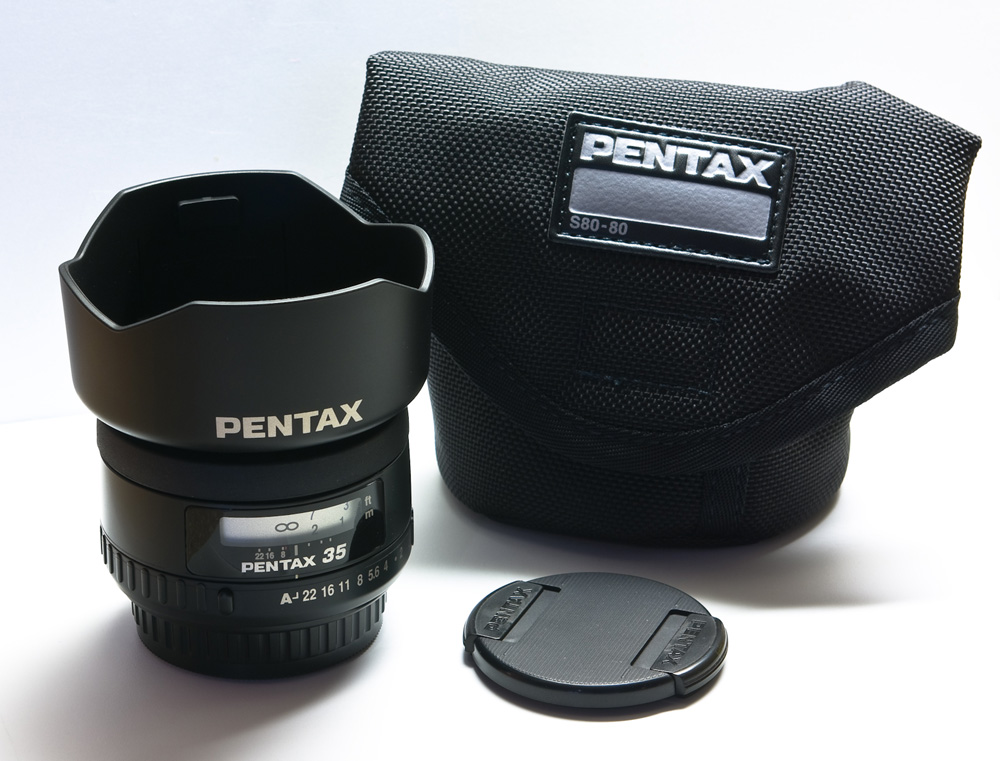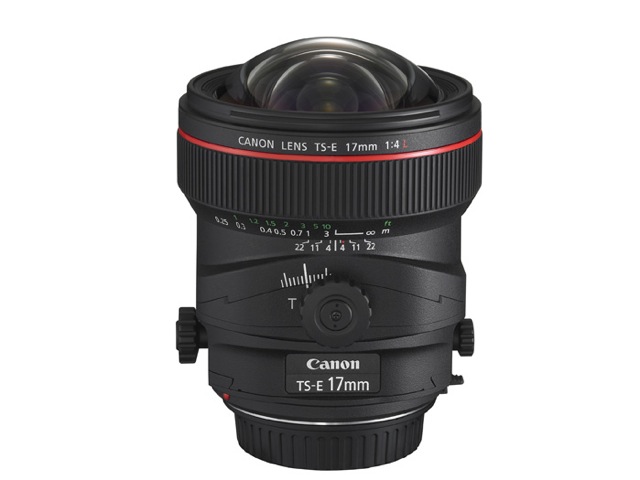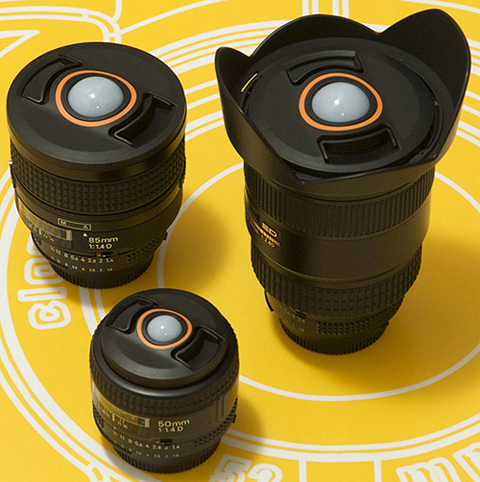
I have been thinking a lot lately about lenses and I thought I’d share some of my thoughts. I’m planning on doing a more specific lens comparison but I will save that for a later date. For now I just want to talk about my general thoughts about lenses and their applications. Why is this important? Well, as you begin to expand your collection of lenses you will soon learn that what you have really invested in is a lens system and not a camera system. Quality glass (lenses) will last a lifetime and will likely outlast the latest whiz bang technology of the latest DSLR you just bought. Hopefully by sharing my thoughts and experiences some of you will have an easier time of navigating the confusing quagmire that comes along with upgrading your DSLR’s optics and make the most out of your investment.
For this discussion I am going to primarily refer the standard 35mm film focal lengths of lenses. I will add APS-C (1.6X) focal length or 35mm equivalents in brackets [ ] where appropriate. In general, if I say 50mm I mean 50mm focal length on a 35mm film camera or full frame sensor DSLR. The reason I am doing it this way is that the 35mm equivalent focal length of a lens describes its field of view (FoV) more accurately than APS-C (or DX) format measurement does. If any of this is confusing to you I strongly suggest reading the Wikipedia page on the APS-C format before continuing.
What would I buy?
Let’s imagine for a moment that money is no object and I could fill my camera bag with whatever I wished. What would that be? While we’re in dreamland, let’s assume that the camera I’ll be shooting with all this fictional glass is Canon’s awesome new 5D Mark II. Here are the lenses I’d want to have available and why (I’m sure I could find similar choices for Nikon but I know the Canon stuff better):
- 17-40mm f/4 L wide angle zoom. Why if money is no object would I choose the 17-40 f/4L over the faster 16-35 f/2.8L? Simple, the extra speed the 2.8 provides is not worth the extra weight. A super wide lens like this is something I’m most likely to carry around with me while traveling and the lighter it is the more likely I’ll take it with me. Also, the idea of wide angle shots is usually to capture as much detail as possible (think streetscape, landscape or 5-year-old birthday party action) so a larger aperture is just going to work against you. I’m sure there are specific situations where the extra speed of the 16-35 f/2.8 would come in handy but for me I’d most likely choose the slower and lighter option here and just dial up the ISO as needed in low light situations. The only caveat here is if I was shooting an APS-C body. Then the 16-35mm [26-56mm] would make a logical upgrade for the standard 18-55 kit lens. See my comments below for APS-C wide angle lens thoughts.
- 35mm f/1.4 L wide angle prime. I really like having a fast wide angle lens for available light shots of the kids around the house and for other times when a 50mm lens just doesn’t provide quite enough FoV to capture a scene the way I want to. In fact, while a 50mm lens best reproduces the magnification the human eye sees, a 35mm lens better represents the field of view our eyes can see (in focus). Having never owned a fast 35mm I can only guess but I bet it would end up being my standard lens mounted on my camera 90% of the time. Becomes a medium angle lens [56mm] on an APS-C camera.
- 24-105 f/4 IS L zoom. This is a close call. The 24-70 f/2.8 L is a very tempting choice. I have rented both lenses and they are both superb. The 24-105 f/4 is the one I’d put in my bag though because money is no object here and I’m going to have all these other lenses to choose from. Huh? Well, if I could only have one lens it would be the 24-70 f/2.8 L. Easy. However, if I’m going to be toting around a bag full of glass the 24-105 f/4 just makes more sense. It is lighter (see argument for 17-40 above), has a wider zoom range (better for “walking around”) and has IS. There are times when a slower shutter speed (1/30-1/4 second) is what you need to capture action and IS is the only way to get get these shots w/o the hassle of a tripod. The 24-105 focal range means I would have a stabilized lens that covers all wide to medium telephoto applications. Also an awesome all-purpose [38-168mm] lens on APS-C bodies (though lacking a bit on the wide end).
- 50mm f/1.4 USM prime. Here I go again cheaping out even though money is no object. Yes, Canon’s 50mm f/1.2L is the Mother of All fiddies. However, from what I can tell it is not that much better than the non-L 50 1.4 but it is that much bigger and heavier (and somewhat slower to focus). I know this whole weight thing is getting long in the tooth, but for the way I shoot it is important. When I travel I typically head out on foot to explore which means I have to carry my gear on my person. After spending an entire days lugging an overloaded camera bag around Hong Kong and Paris I can tell you that less is definitely more. The main problem is that you get to these wonderful places and you are faced with making the choice of picking one or two lenses and hoping for the best- or lugging your entire kit with you. I’ve done both and can say that whatever the choice the weight of what you carry always remains an issue. Studio, sports and landscape “trunk” photographers are the only ones that don’t have issues with how much stuff weighs. As for me, I carry my camera almost everywhere (including on my bike) so I want to find the best balance between size and performance. Here, the 50 1.2 just doesn’t make sense for me. YMMV. See fast prime suggestions for APS-C cameras below.
- 100mm f/2.8 USM Macro. You can’t beat a dedicated macro lens. I like the 100 f/2.8 on a full frame body as it provides the right mix of magnification and stand-off distance from the subject. I like to shoot most of my macro shots at arm’s length. Canon’s 50mm f/2.5 Macro is OK but I have found that I often have to get too close with the camera to get the magnification I want (often blocking out the available light). Meanwhile, Canon’s 180mm f/3.5 L Macro is an awesome lens but its longer focal length pretty much requires a tripod to get decent results. APS-C photographers should check out Canon’s EF-S 60mm f/2.8 Macro.
- 70-200 f/2.8 IS L zoom. This is one of photography’s greatest lenses. Perfect for portraiture, sports action, school plays, wildlife, the occasional macro shot, and pulling in details in just about any situation. The f/2.8 version gets the nod over the f/4 version even though it is larger and heavier. You’ll need the speed to catch those low light shots and the shorter DoF will make your subjects pop. My bet is that you’ll rarely shoot this lens at anything other than wide open. Works great on both full frame and APS-C bodies.
- 400mm f/2.8 IS L super telephoto. Here’s where the “money is no object” part really pays off. I have always wanted a fast super telephoto for getting in tight to stuff you can’t get up close to. I’m thinking sports car racing, school plays, African safaris, and the occasional full moon. Not a lens I would carry around in my bag but definitely one I’d like to have if the situation warranted it. I’d skip the 100-400 f/4.5-5.6 IS L in favor of lens speed and ultimate image quality. Have an APS-C camera? Then your 1.6X crop factor makes this monster a 640mm f/2.8 equivalent for no extra charge ;-)
OK, so back to reality for a second. Most of us are amateurs and can not justify dropping $15K on our camera gear. Therefore, what should you take away from all of this?
- Buy the best lenses you can afford. It will outlast your camera and you’ll never find yourself second guessing a lens purchase. If you find you don’t use a lens enough to justify keeping it, you’ll also find that pro-quality glass earns top-dollar on the used market. If you are thinking of dropping $180 on a Canon 28mm f/2.8 to get a wide angle prime do yourself a favor and save your pennies until you can step up at least to the $420 28mm f/1.8 USM. What you will gain in ultimate image quality and versatility will pay off many times over in your photographs. That 28 2.8 will end up in a drawer somewhere collecting dust as soon as you realize that its useless below f/4 anyway. Trust me. I know.
- Do your research. This may directly contradict what I just said as you will find bargains out there. The non-L 50 1.4 I mentioned above is one example. In fact, at only $90 brand new Canon’s 50mm f/1.8 II is probably the best value in lenses anywhere. (Check out dpreview.com’s new review of the Canon EF 50mm f/1.8 II.) That being said, do your research so you know what you are getting. Personally, I would wait and save up for the 50 1.4 just to get the speed and silence of the USM focus motor. Also, the 50 1.4’s 8 bladed diaphragm produces far superior bokeh and starbursts when stopped down than the 50 1.8’s 5 bladed diaphragm. Buy the 50 1.8 II and you’ll be perfectly happy with it until you shoot one of the USM lenses. Then you’ll start beating yourself up. The best places to research are websites that actually test equipment. I prefer the-digital-picture.com, photozone.de, and dpreview.com because they use standardized testing procedures. There are blogger/photographers (like me) who “test” lenses and write their opinions about them. Take those with a grain of salt but they are usually pretty useful. Be wary of discussion forums and Amazon.com review ratings and the like. These are typically very unreliable sources for quality information.
- Pick up a fast prime lens. My recommendation is a 50mm equivalent focal length at f/1.8 or faster. If you are shooting an APS-C sensor camera this is going to be tough. Technically you’ll need a 31mm lens to get an equivalent 50mm focal length. Sigma is one of the only lens manufacturers making a lens like this. Their 30mm f/1.4 EX DG HSM looks like it fits the bill perfectly. However, it’s relatively pricey ($500) and tests say it is very soft off center. Pentax’s SMCP-FA 31mm f/1.8 AL Limited is an ideal choice for Pentax shooters but at $800 you’ve got to be mighty deep into Pentax. 35mm focal length lenses are probably your best bet. Unfortunately, truly fast versions are usually pricey and hard to come by (see the $1,200 35mm f/1.4 L above). If you can’t find a 30-35mm f/1.8 or faster lens do what most everyone else does and put your money into a fast 50mm. It’ll end up being a bit long on an APS-C sensor camera [80mm] but at least you can start exploring the Wonderful World of Bokeh and available light photography.
- Consider an ultra wide angle zoom. I’m not talking fisheye. I am talking at least 15-17mm on the wide end, though. A super wide angle lens opens a whole new world of photography for less money than most lens investments. I’ve already shared my feelings above about Canon’s 17-40 f/4L and 16-35 f/2.8L lenses for full-frame applications. However, neither of these fit the bill for an APS-C body. Look for something around 10mm [16mm] on the wide end. There are a number of choices depending on your camera so do your homework. I hear Canon’s EF-S 10-22 f/3.5-4.5 USM is superb. I’ve owned Sigma’s 10-20 f/4-5.6 EX DC lens and thought it was great.
- Avoid super zooms. These are the 18-200mm+ do-it-all lenses that are so popular at camera stores and on-line discounters. Sure, the idea of one lens for every situation seems like a good idea, but the reality of making such a lens results in some pretty significant compromises in lens speed, image quality and usability. While prime lenses will always give you the best ultimate image quality they may not be the right choice for every situation. However, you will be much better off if you limit the range of your zooms and follow suggestion number one above. In my experience you can get very decent results from mid-level primes but anything other than top-of-the-line zooms are likely to suffer in more than one area (speed, sharpness, vignetting, chromatic aberrations, etc).
- Save up for that super telephoto. Don’t waste your money on bargain brand telephoto lenses. There are a lot out there (Phoenix) but most of them aren’t worth the plastic they are made of. If dropping $5K on a lens doesn’t seem like it will ever fit into your plan then…
- Rent before you buy. So, if you’re following my advice and buying the high dollar glass maybe you should take it for a test drive before you take the plunge. There are a number of camera equipment rental services out there. I have only rented locally while I am traveling so I can’t recommend any of the on-line services, but I hear good things about many of them. Also, renting is a great way to get those awesome once-a-year close-up Christmas school program photos of Jr. from the back row of the gymnasium. No sense putting that $5K lens in the closet until next year, right?
I hope this helps clear up the mystery of lens selection a bit for those of you who are just starting to wade into the hobby. Feel free to post specific questions in the comments or drop me an email. Those of you who are more experienced please take a moment to share your thoughts on the subject as well.
January 25th, 2009 | Tags: 10-20mm f/4-5.6 EX DC, 100 f/2.8 USM Macro, 100-400 f/4.5-5.6L IS, 16-35 f/2.8L, 17-40 f/4L, 180mm f/3.5L Macro, 24-105 f/4L, 24-70 f/2.8L, 28mm f/2.8, 35mm f/1.4L, 400mm f/2.8L IS, 50mm f/1.2L, 50mm f/1.4L, 50mm f/1.8 II, 50mm f/2.5 Macro, 5D Mark II, 70-200 f/2.8L IS, Amazon.com, APS-C, B&H Photo, bokeh, Canon, Canon EF 85mm f/1.8 USM, dpreview.com, EF 28-300 f/3.5-5.6, EF-S 10-22mm f/3.5-4.5 USM, EXIF, Flickr Friends, lens, Pentax, Phoenix, photozone.de, Sigma 30mm f/1.4 EX DC HSM, SMCP-FA 31mm f/1.8 AL Limited, the-digital-picture.com, Wikipedia, www.booleansplit.com | Category: gear | Comments (3)




